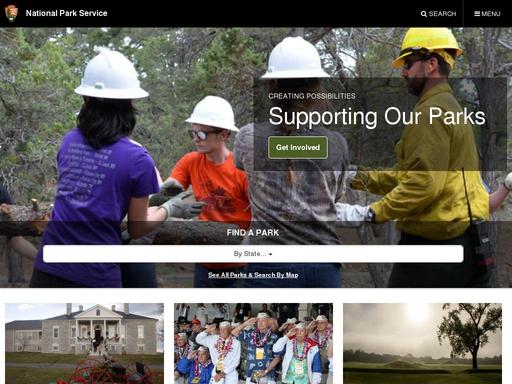Rate Grand Portage National Monument
Learn and Explore
Since 1916, the National Park Service has been entrusted with the care of our national parks. With the help of volunteers and partners, we safeguard these special places and share their stories with more than 275 million visitors every year. But our work doesn’t stop there.
We are proud that tribes, local governments, nonprofit organizations, businesses, and individual citizens ask for our help in revitalizing their communities, preserving local history, celebrating local heritage, and creating close to home opportunities for kids and families to get outside, be active, and have fun.
Taking care of the national parks and helping Americans take care of their communities is a job we love, and we need—and welcome—your help and support.
Our Mission
The National Park Service preserves unimpaired the natural and cultural resources and values of the National Park System for the enjoyment, education, and inspiration of this and future generations. The Park Service cooperates with partners to extend the benefits of natural and cultural resource conservation and outdoor recreation throughout this country and the world.
Frequently Asked Questions
How do I obtain a park entrance pass?
Only 118 of your 417 park sites charge entrance fees. You can obtain park entrance passes by visiting a park site that charges an entrance fee. Entrance fee sites have passes available; we recommend calling a park prior to your visit. (See the park search to locate a specific park.) There are a number of entrance passes available, including park-specific passes as well as passes that offer entrance to more than 2,000 federal recreation sites in addition to the national parks (Annual, Military, Senior, 4th Grade, Access, and Volunteer passes). Learn more about the America the Beautiful – The National Parks and Federal Recreational Lands Pass.
About this location:
National Monument
Operating Hours & Seasons
Grand Portage National Monument
Heritage Visitor Center: Summer hours: Daily 8:30am – 5:00pm CDT – Memorial weekend through Columbus (Indigenous People’s) Day. Winter hours: Monday-Friday 8:30am – 4:30pm CST – Columbus (Indigenous People’s) Day through.Memorial Weekend. Historic Depot Open Seasonally: Daily 9:00am – 5.00pm CST Memorial weekend through Columbus (Indigenous People’s) Day. Park Grounds and trails are open daily from sunrise to sunset.
Standard Hours
- Sunday:12:00 AM-12:00 AM
- Monday:12:00 AM-12:00 AM
- Tuesday:12:00 AM-12:00 AM
- Wednesday:12:00 AM-12:00 AM
- Thursday:12:00 AM-12:00 AM
- Friday:12:00 AM-12:00 AM
- Saturday:12:00 AM-12:00 AM
Fees & Passes
Entrance Fees:
- $0.00 – Grand Portage National Monument is fee free.
Grand Portage National Monument is fee free. This includes visiting the heritage (visitor) center and the historic depot (great hall, kitchen, canoe warehouse, gatehouse, stockade and picnic grounds. Camping at Fort Charlotte requires a free camping reservation for the two back country campsites. To preserve the campsites, no more than nine campers may occupy a campsite at one time.
About
Live History. Celebrate Heritage.
Travel into the past to discover the present. Explore the partnership of the Grand Portage Ojibwe and the North West Company during the North American fur trade and the NPS today. Follow pathways into a distant time. Experience the sights and smells of a bustling depot reconstructed in its exact location. Hear the beat of the drum echo over Gichigami – Lake Superior.
Directions
Traveling northeast or southwest on MN Hwy 61 visitors will see signs alerting the approach to Grand Portage National Monument. A right turn exit lane or left turn from Hwy 61 at the Grand Portage Trading Post will take visitors onto Casino Road. Turn left at the first stop sign from Casino Road to Mile Creek Road. About 3/4 mile on Mile Creek Road, look for a large wooden entrance sign on your left. Turn left up the short hill into the Heritage Center parking lot.
Visitor Centers
Heritage Center/Headquarters
The Heritage Center includes two floors of exhibits, a classroom where a feature film is shown, an Eastern National bookstore, artwork murals by Carl Gawboy, David Gilsvik, David Geister, Howard Sivertson and Eastman Johnson and images of Grand Portage by photographer Travis Novitsky. The second floor is park headquarters.
Weather
Short, warm summers and long, cold winters define the climate of northern Minnesota. Average range of summer temperature is from 55°F to 78°F in July and average range of winter temperatures is from –11°F to 12°F in January. Average annual precipitation in Grand Portage, MN is about 32 inches.



